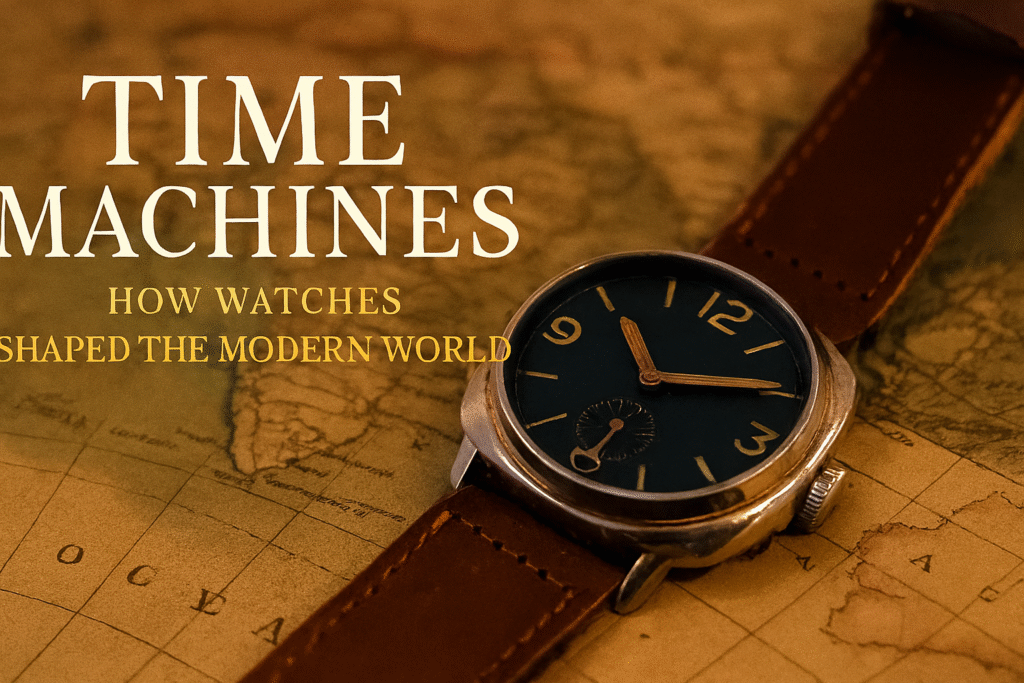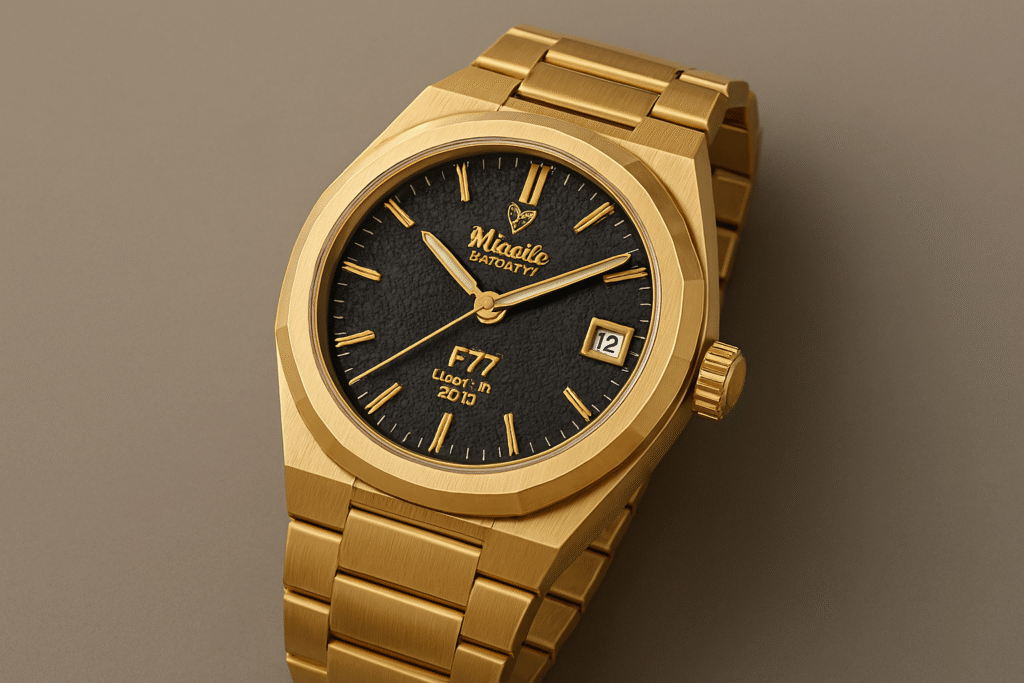Introduction: How Watches Shaped the Modern World
Time Machines – How Watches Shaped the Modern World explores 100 iconic watches. It explains how wristwatches evolved from practical tools into symbols of culture, design, and personal style. From early pilot watches to modern smartwatches, the book illustrates the evolution of watches and their impact on fashion, technology, and society.
Understanding the Evolution of Watches
- Why wristwatches replaced pocket watches
- Iconic timepieces that transformed watch design and technology
- How watches reflect culture, fashion, and personal identity
- Why wristwatches continue to influence style and lifestyle
Related content: The History of Luxury Watches and Omega Speedmaster History.
Wristwatch Milestones and Modern Watch History
In the early 20th century, wristwatches became essential for soldiers, pilots, and explorers. They offered faster access to time than pocket watches. Over decades, watches evolved into:
- Tools for navigation, diving, and racing
- Symbols of status and achievement
- Fashionable accessories reflecting style and taste
See also: Rolex History and Iconic Models and Fondation de la Haute Horlogerie for insights into global watch culture.
Iconic Timepieces That Shaped Modern Watch History
The book highlights watches that defined eras:
- Cartier Santos (1904): First wristwatch for pilots
- Rolex Oyster (1926): First waterproof case
- Omega Speedmaster (1969): Worn on the moon
- Swatch (1983): Made watches fashionable and accessible
- Apple Watch (2015): Combined traditional timekeeping with digital features
Why Collectors Should Explore the Evolution of Watches
Time Machines connects history, design, and culture. Readers see how watches influenced fashion, technology, and lifestyle. The book shows why these timepieces matter and their role in shaping modern watch history.
FAQs
Q: How many watches are featured?
A: 100 watches from 1900 to today.
Q: Are smartwatches included?
A: Yes, including the Apple Watch.
Q: Who should read this book?
A: Collectors, designers, and anyone interested in watch history.
Q: What makes it unique?
A: It blends cultural stories with technical milestones in watchmaking.
This comprehensive global cuisine FAQ covers everything about Asian and Western food and drinks. Whether you’re exploring international cooking techniques or discovering new flavors, this global cuisine FAQ answers the most frequently asked questions about world food traditions, ingredients, and culinary practices from both Eastern and Western cultures.
Global Cuisine FAQ: Asian & Western Food & Drinks
Food reveals cultural contrasts in clear and delicious ways. From cooking methods to dining customs, Asian and Western cuisines showcase unique traditions while also offering fascinating overlaps. Below, you’ll find answers to the most common questions about these culinary worlds.
Understanding Core Differences in Cuisine
1. What distinguishes Asian and Western culinary traditions?
Asian meals often rely on rice or noodles as a foundation. Flavors usually come from soy sauce, ginger, garlic, and a wide variety of spices. Meanwhile, Western gastronomy emphasizes bread, potatoes, and pasta. Dairy plays a key role, with butter, cream, and cheese giving richness to many dishes. Herbs such as rosemary and thyme highlight European cooking. These contrasts create distinct dining habits and flavor profiles.
2. Are Asian dishes always spicy?
No, not at all. While cuisines from Thailand and parts of India feature bold use of chilies, not every dish follows this pattern. Japanese sushi, Chinese dim sum, and Korean bulgogi are mild examples. In fact, Asian cuisines range from fiery to delicate, showcasing a rich palette of flavor.
Western Breakfast Staples and Comfort Foods
1. What constitutes typical Western morning meals?
Western breakfasts often include eggs, bacon, and toast. Pancakes, waffles, and cereal are also popular choices. These hearty starts are usually enjoyed with coffee, tea, or juice, providing both energy and comfort.
2. What represents popular Western comfort foods?
Comfort foods in the West speak to nostalgia and indulgence. Creamy macaroni and cheese, pizza, and hearty casseroles are favorites. Similarly, burgers and fried chicken have wide appeal. Because they are warm, filling, and familiar, these dishes strongly connect to emotion.
Cultural Dining Practices
1. Do all Asian cultures employ chopsticks?
No. Chopsticks dominate in East Asia—China, Japan, and Korea. However, Southeast Asia prefers spoons and forks, while India and parts of the Middle East often use flatbreads or hands. This diversity highlights how food customs closely reflect culture.
2. Why are some Asian foods fermented?
Fermentation preserves food while also enhancing nutrition and flavor. Korean kimchi, Japanese miso, and Indonesian tempeh show how tradition meets health benefits. These foods are valued not only for taste but also for their role in well-being.
Common Western Beverages
1. What beverages are common with Western meals?
Western dining often features water, soda, or fresh juice. Alcohol also has a strong cultural connection, with wine served at European dinners and beer central in North America. In the southern United States, sweet iced tea is a staple.
Dietary Flexibility and Options
1. Can one discover plant-based options easily?
Yes. Asian cuisines offer tofu stir-fries, lentil dals, and vegetable curries that are naturally vegetarian. Western food, similarly, embraces plant-based eating. Salads, vegetarian pastas, and vegan burgers have grown popular, making meat-free dining accessible worldwide.
Unique Asian Drinks to Explore
1. What are some unique Asian beverages?
Asia provides a wide variety of distinctive drinks. Bubble tea, from Taiwan, combines tea with chewy tapioca pearls. Japanese sake, made from rice, holds deep cultural meaning. Strong Vietnamese iced coffee, sweetened with condensed milk, adds a bold twist compared to Western brews.
Portion Sizes and Dining Habits
1. How do portion sizes compare?
Western meals often emphasize large servings, reflecting abundance. By contrast, Asian meals are usually smaller yet balanced, encouraging sharing and mindful eating. This creates different social experiences around the table.
The Art of Fusion Cuisine
1. Is it feasible to integrate Asian and Western flavors?
Absolutely. Fusion cuisine blends traditions in creative ways. For instance, teriyaki burgers combine Japanese flavors with American fast food, while kimchi tacos bring Korean spice to Mexican street food. These playful mixes show how food bridges cultures.


